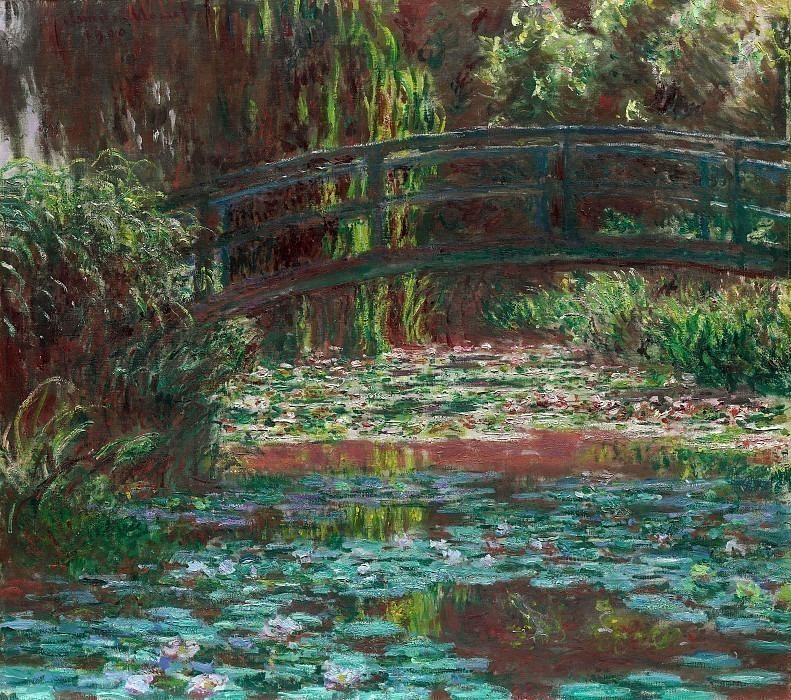

Claude Oscar Monet – The Japanese Bridge (The Bridge over the Water-Lily Pond)
1900. 89×101 cm
Location: Art Institute, Chicago.
На эту операцию может потребоваться несколько секунд.
Информация появится в новом окне,
если открытие новых окон не запрещено в настройках вашего браузера.
Для работы с коллекциями – пожалуйста, войдите в аккаунт (open in new window).
Поделиться ссылкой в соцсетях:
You cannot comment Why?
The water itself is a mirror, reflecting the bridge, the surrounding greenery, and the play of light and shadow on the scene above. Monets signature Impressionist brushstrokes are evident throughout, with broken colors and a focus on capturing the transient effects of light and atmosphere rather than precise detail. The overall impression is one of natural beauty, peace, and the immersive experience of being in a garden.
The subtext of this painting lies in the exploration of natures beauty and the artists personal connection to it. The Japanese bridge itself is a nod to Monets fascination with Japanese art and aesthetics, which often influenced his garden design and artistic compositions. The pond and its water lilies became a recurring motif in Monets later works, symbolizing his deep immersion in his Giverny garden and his lifelong pursuit of capturing the ephemeral qualities of light and color. The painting invites viewers to experience the tranquility and sensory richness of this cultivated natural space, reflecting on the beauty that can be found in the everyday and the artists ability to transform it into a timeless vision.